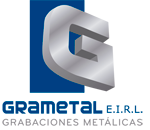The first number is always the percentage of the discount. The second number is always the number of days of the discount period. If the discount is not taken, the buyer must then pay the higher price as opposed to paying a reduced cost. If the invoice is not paid within the discount period, no price reduction occurs, and the invoice must be paid within the stipulated number of days before late fees may be assessed. For a discount of 1%/10 net 30, it is assumed that the 1% discount will be taken. This results in a receivable being debited for 99% of the total cost.
How it works in an Invoice
The payment terms make sure both buyers and sellers have clear rules. Cash is the lifeblood of any business, and steady cash streams make for a healthy company. With better cash flow, companies can pay bills on time, invest in new projects, and handle unexpected costs without stress.
With steady cash flow, businesses run smoothly and can plan ahead for future expenses or investments. If you see this on an invoice, it means you can get a 1% discount if you pay within 10 days. But if you don’t take the discount, you still need to pay the full amount in 30 days.
A Net 30 payment term means the merchant expects the buyer to make payment in full within 30 days of the invoice date. Variations in n/30 day terms exist to allow for multiple step discounts. For example, the invoice terms might be expressed at 3/10, 1/20, net 30.
The 30 day period includes the time products spend in transit to the end-consumer. Say your small business pays around 100 invoices per month, with an average cost of $2,500. On 1/10 net 30 terms, you could save the 10 biggest ico scams swindled $687 4 million $25 per invoice, or $2,500 each month (100 x 25). While the 1/10 Net 30 payment terms offer significant benefits, they also come with potential drawbacks that could impact both sides of a transaction. The 1%/10 net 30 calculation represents the credit terms and payment requirements outlined by a seller. The vendor may offer incentives to pay early to accelerate the inflow of cash.
Sellers benefit because early payments mean steadier cash flow. They don’t have to wait too long or worry about late payments as much. The gross method of purchase discounts assumes the discount will not be taken and will only input the discount upon actual receipt of payment within the discount period. Therefore, the entire amount of receivable will be debited. When payment is received, the receivable will be credited in the amount of the payment and the difference will be a credit to discounts taken. Discount terms like 1%/10 net 30 are virtual short-term loans.
Invoice For 800 With Terms 1/10 Net 30
- Just write them as (discount percentage)/(number of days in the discount period) net (number of days to make the complete payment).
- The term means that payment in full is due 30 days after the date of the invoice.
- Even if your business isn’t dealing with large invoice quantities, it can still have a significant impact when making expensive purchases.
- A Net 30 payment term means the merchant expects the buyer to make payment in full within 30 days of the invoice date.
Early payment discounts such as 1/10 net 30 are usually a win-win for both the payor and the payee. Yes, you can pay on day 30 without extra fees if you didn’t use the early payment discount. Using strategies such as 1/10 net 30 impacts both accounts payable and accounts receivable positively. It’s more than just getting paid faster; it’s about financial stability. Businesses use these terms to ensure they have the funds they need when they need them.
Cash Flow Statement
It means that if the bill is paid within 10 days, there is a 1% discount. If you do not comply with the payment terms of 2/10 net 30, i.e., fail to pay the discounted amount within the 10-day period, you will be responsible for the complete invoice amount without any discounts. Just as with 1/10 net 30, 2/10 net 30 offers customers a discount for paying for services within 10 days. Offering Net 30 also increases the risk of late payments.
Also referred to as “dynamic discounting” or “prompt payment discounts,” they provide an incentive for customers to pay an invoice in a timely manner. Getting creative with payment discounts can drastically improve a business owner’s chance of getting paid on time. While 1/10 net 30 is arguably the most common of these early payment discounts, it can be helpful to read about other options as well, such as 2/10 net 30. And if you’re not working on net 30 terms, these obviously won’t be an option, so you’ll have to explore other early payment discounts.
Factoring can be an alternative option to offering net 30 terms for some businesses.
Net 30 is an example of terms for a customer who is paying in arrears, or paying for a service after it has already been completed. On net 30 terms, the customer must pay within 30 days of when the invoice for a product or service was provided. In the world of business, managing money matters as much as making it. When a sale is made on credit, both buyers and sellers enter a dance of deadlines and payments—each step carefully choreographed to keep cash flowing smoothly.
For instance, a buyer and seller working on net 60 terms might agree to 2/15 net 60. If you’re selling a product, you should take into account your cash flow needs before agreeing to early payment discounts. Ultimately, it’s up to the two parties to come to an agreement on a reasonable discount that will benefit both sides.
In that case, you’ll want to open a Net 30 Vendor Account with Burst Biz. No additional charge will be applied as long as you pay by day thirty. Without a steady influx of cash, maintaining liquidity becomes difficult, possibly stalling growth or investment opportunities for the company. They don’t have to wait or chase down the money they are owed.
This is because if the discount is not taken, the buyer must pay the higher price as opposed to paying a reduced cost. In effect, the difference between these two prices reflects the discount lost, which can be reported as a percentage. 1/10 net 30 isn’t the only common early payment discount. The discount terms can be adjusted based on the discount and net terms that you’d like to offer.
A payment term is an indication on an invoice of how quickly a merchant expects to receive payment in full from a buyer. how to become a software engineer Net 30 terms are often combined with a cash discount for early settlement. To illustrate, for example 2% 10 days, net 30 terms or 2/10, n/30 means, that a 2% discount can be taken if payment is made with 10 days.
Early payment discounts are typically only how to buy axolotl applicable for invoices that are paid in arrears. If you’re working on PIA (paid in advance) or COD (cash on delivery) terms, early payment discounts may not be an option. This payment term is common when one business sells something to another business. They use it often because it works well for both sides—the seller gets their money quickly, and the buyer saves some cash by paying sooner rather than later. On the flip side, Net 30 or longer payment terms can be dangerous for a small business. The 1%/10 net 30 calculation is a way of providing cash discounts on purchases.
Variations to Net 30 usually refer to longer payment terms or discounts meant to incentivize buyers to pay on time. A Net 60 payment term means that the buyer has 60 days from the date of completion to pay for the order. An advantage of using a Net 30 invoice payment term is that buyers are more incentivized to purchase if there is an option to delay payment.

